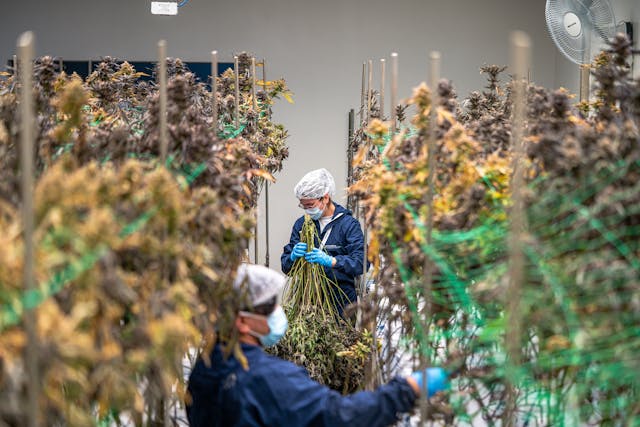Agriculture has long been the backbone of human survival, but in past decades, farming has evolved far beyond traditional practices. The demands of growing populations, climate change, and sustainability challenges are pushing the industry to adopt smarter, more efficient methods. Central to this evolution is the design of farming facilities, which are no longer just spaces for housing crops and livestock but sophisticated hubs of technology, efficiency, and sustainability. From energy-saving structures to automated systems, the latest innovations in facility design are redefining what it means to farm in the modern era. This article explores some of the most impactful advancements shaping the future of farming facilities.

Vertical Farming Facilities
One of the most revolutionary developments in farming facility design is the rise of vertical farming. Unlike traditional agriculture, which relies on vast stretches of land, vertical farms stack crops in layers within controlled indoor environments. This design makes it possible to maximize space efficiency and grow food in urban areas where land availability is limited. These facilities use hydroponics or aeroponics, reducing the need for soil and minimizing water consumption compared to conventional farming. Vertical farms are often equipped with climate control systems and LED lighting, ensuring year-round production regardless of weather conditions. This innovation addresses land scarcity and food security challenges, making it a cornerstone of future agriculture.
Smart Greenhouses with Advanced Climate Control
Greenhouses are not new to farming, but their designs have been dramatically transformed with the introduction of smart technology. As experts from Rimol greenhouses add, today’s advanced greenhouses integrate automated climate control systems that monitor and adjust temperature, humidity, and light exposure in real time. Sensors collect data on environmental conditions, enabling precision adjustments that optimize plant growth while conserving resources. Some facilities utilize renewable energy sources such as solar panels to power these systems, further reducing environmental impact. By creating ideal growing conditions and minimizing waste, smart greenhouses enhance productivity and sustainability, positioning themselves as vital tools for the future of agriculture.
Robotics and Automation in Farming Facilities
Automation has become a key feature in modern farming facility design. From robotic harvesters to automated feeding systems, robotics streamlines operations and reduces labor costs. Facilities equipped with robotic systems can perform tasks such as planting, monitoring, and harvesting with high accuracy and efficiency. Drones are being integrated for monitoring large-scale operations, assessing crop health, and mapping soil conditions. These technologies increase productivity and improve precision, reducing reliance on manual labor while addressing the global shortage of agricultural workers. As robotics becomes more affordable and adaptable, they are expected to be a standard feature in the farms of tomorrow.
Energy-Efficient and Sustainable Facility Designs
Sustainability is at the core of modern farming facility innovation. Designers are now incorporating energy-efficient building materials, water recycling systems, and renewable energy sources into farm structures. Some livestock barns and greenhouses are equipped with solar panels or wind turbines to generate power, reducing dependency on fossil fuels. Facilities are experimenting with closed-loop water systems that recycle irrigation water and reduce consumption. These sustainable design strategies lower operational costs and minimize environmental footprints, allowing farms to meet growing demand without compromising the planet’s health. Energy efficiency and sustainability are critical aspects of competitive farming.
Modular and Flexible Facility Designs
Another important trend in farming facility design is modularity. Modular facilities are built with flexibility in mind, allowing farmers to expand or adapt their structures as needs evolve. For example, a modular greenhouse system can be expanded by adding new units without major structural overhauls. This adaptability is crucial in an industry where demand, technology, and environmental conditions are constantly changing. Modular designs often reduce initial construction costs and shorten build times, making them an attractive option for large agricultural enterprises and small family-owned farms. By offering scalability and adaptability, modular designs give farmers greater control over long-term planning.
Integration of Data and IoT in Facility Management
The integration of data and Internet of Things (IoT) technologies has transformed the way farming facilities are managed. IoT-enabled sensors monitor everything from soil moisture levels to livestock health, sending real-time data to centralized systems. Farmers can then make informed decisions backed by analytics, reducing guesswork and maximizing efficiency. These systems often integrate with mobile apps or cloud platforms, allowing facility management from virtually anywhere. Predictive analytics powered by artificial intelligence can forecast crop yields, detect potential diseases, or predict equipment failures. This data-driven approach enhances productivity and reduces risks, cementing IoT as a vital element of modern farming facilities.
The transformation of farming facility design reflects the broader evolution of agriculture toward smarter, more sustainable practices. From vertical farming and smart greenhouses to robotics, energy efficiency, modularity, and IoT integration, these innovations are setting the stage for a more productive and environmentally conscious industry. By combining cutting-edge technology with thoughtful design, farming facilities are advanced ecosystems that support the future of food production. As the global population continues to rise and environmental challenges intensify, these innovations will play a critical role in ensuring agriculture remains resilient, sustainable, and capable of feeding the world.



Leave a Reply